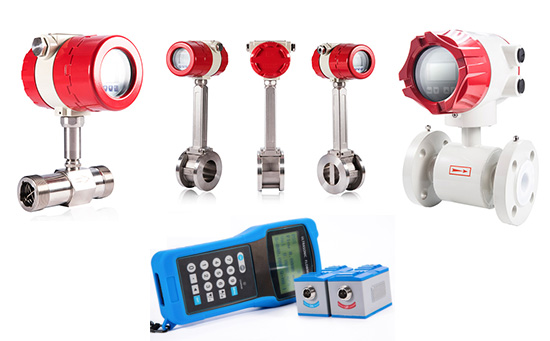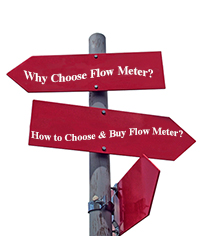Flow Meter Buying Guide
A flow meter (or a flow sensor) is an instrument that is used to indicate the amount of liquid, gas, or vapor moving through a pipe or conduit by measuring linear, non-linear, mass, or volumetric flow rates. Since flow control is often essential, measuring the flow of liquids and gasses is a critical need for many industrial applications – and there are many different types of flow meters that can be utilized depending on the nature of the application.


Why choose flow meter?
-
Without pressure and temperature compensation, the mass flow of gas can be directly measured;

- High repeatability, high reliability, high stability, high precision;
- Wide range; flow and temperature are detected at the same time, and the display is switched;
- Explosion-proof and anti-corrosion design, suitable for various harsh working conditions;
- High sensitivity; large caliber and small flow measurement can be used for leak detection;
- The pressure loss is extremely small, almost negligible;
-
Diverse structure, flexible installation, convenient loading and unloading, easy to use, simple maintenance, two-way detection, anti-vibration.
How to choose a flow meter?
- Accuracy vs Repeatability: In applications where products are sold or purchased on the basis of a meter reading, absolute accuracy is critical. In other applications, repeatability may be more important than absolute accuracy. Therefore, it is advisable to establish separately the accuracy and repeatability requirements of each application and to state both in the specifications.
- Flow Rates and Accuracy: The next step is to determine the required meter range by identifying minimum and maximum flows (mass or volumetric) that will be measured. After that, the required flow measurement accuracy is determined. Typically, accuracy is specified in percentage of actual reading (AR), in percentage of calibrated span (CS), or in percentage of full scale (FS) units. The accuracy requirements should be separately stated at minimum, normal, and maximum flowrates. Unless you know these requirements, your meter's performance may not be acceptable over its full range.
- Requirements: The first aspect to consider is the fluid being measured (e.g., water, gas, oil). The fluid's characteristics should be taken into accounts, such as pressure, temperature, density, composition, conductivity, toxicity, light transmission, and viscosity (of both Newtonian and non-Newtonian fluids). Another important factor is the piping system and its interaction with the fluid of interest. Based on their requirements, users can choose from paddle wheel, piston, thermal, oscillatory, electromagnetic, Karman vortex, ultrasonic, positive displacement, and other flowmeters. Note that variable area flowmeters are among the most common type of meters used today. Last but not least, prospective buyers should decide if the information (continuous or totalized) will be used locally or remotely, including digitally.
- Specifications: One of the leading parameters to consider is a unit's Reynold's number. We should mention that this number should correspond to different fluids and their viscosity levels. Users should also choose appropriate measurement ranges; note that the turndown indication on any flowmeter should show the lowest and the highest numbers it can support. Additionally, choosing a flowmeter should be based on its accuracy. Interestingly, when it comes to meters with and without moving parts, flowmeters without moving parts are preferred as additional fragments may lead to wearing and inaccurate readings.
